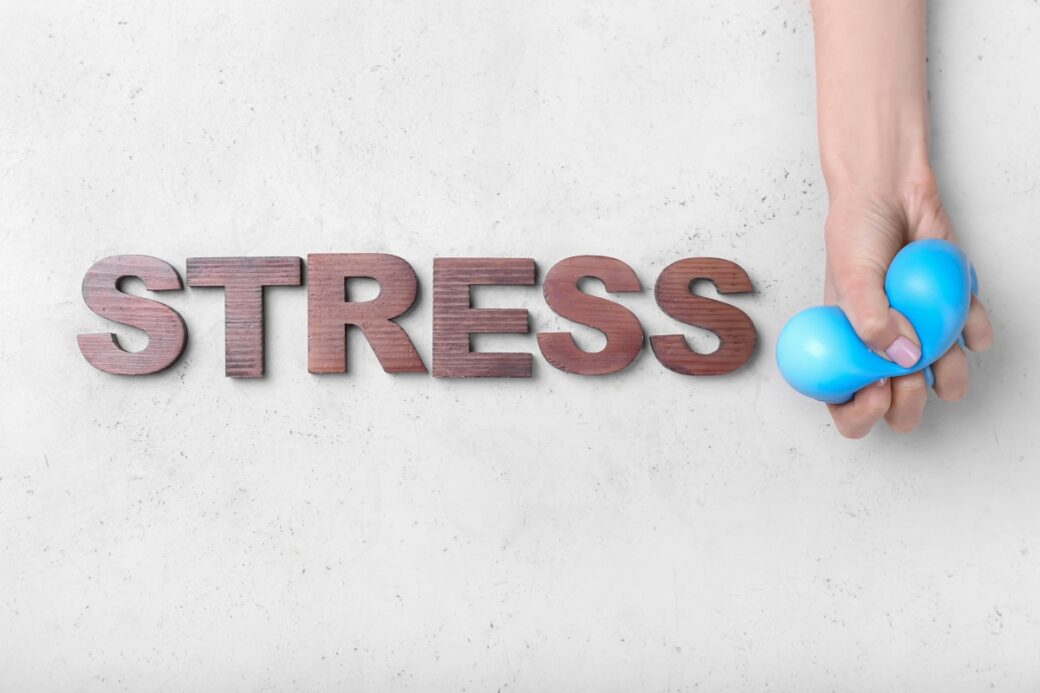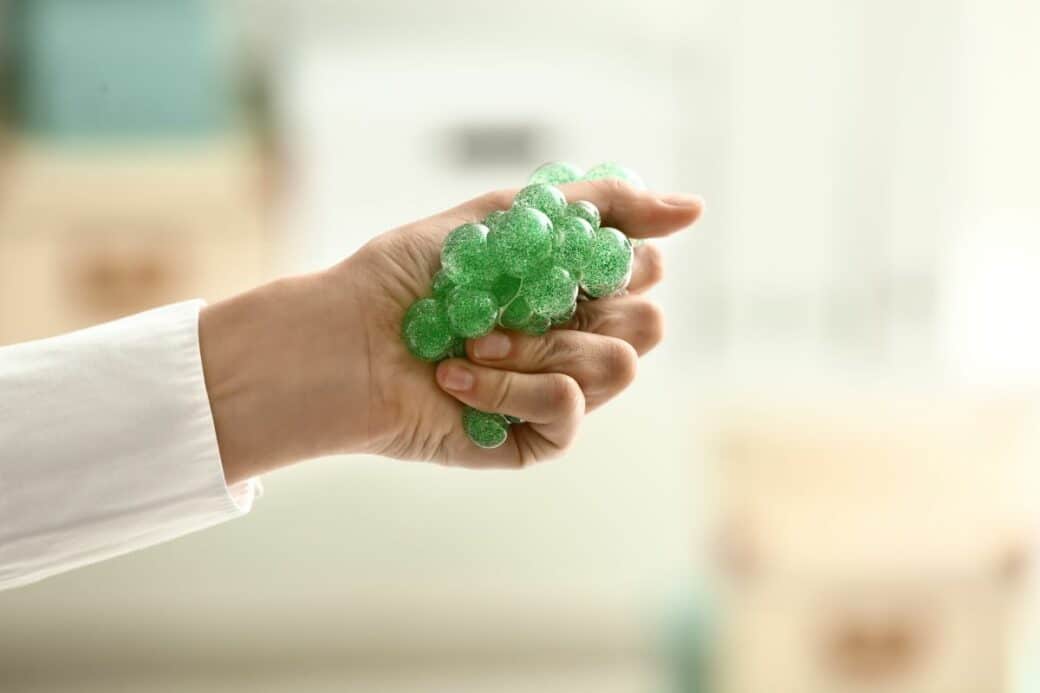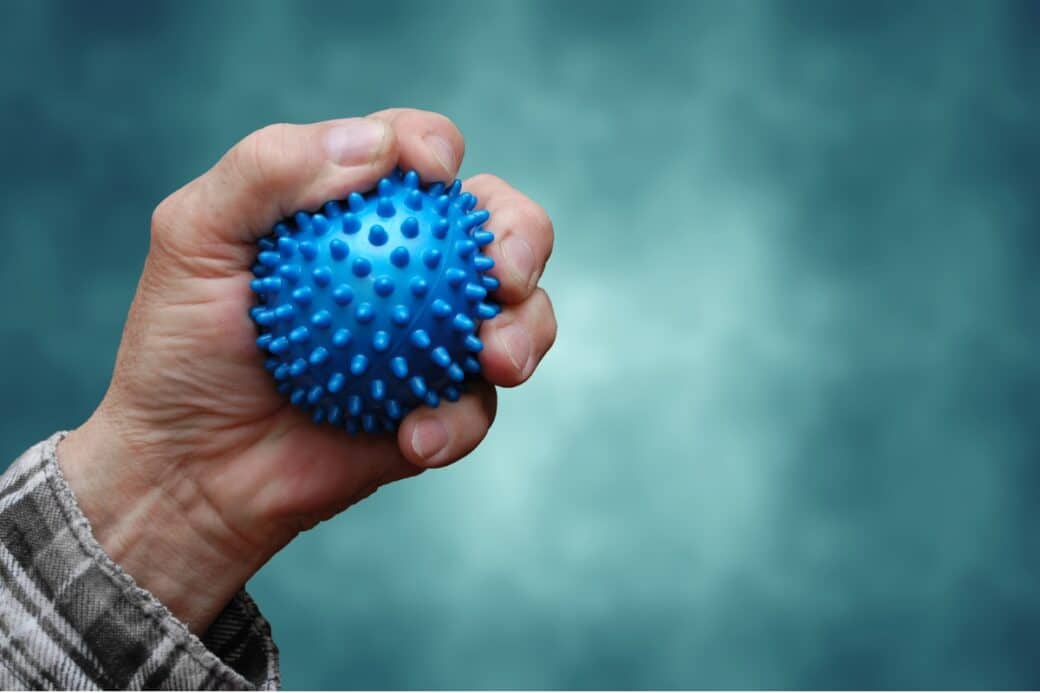In this article, you will discover the fascinating world of stress balls and the research that supports their effectiveness. You may have already experienced the soothing benefits of these squishy balls, but have you ever wondered why they work? Get ready to dive into the exciting findings of stress ball research and learn how these little wonders can help you manage stress and boost your overall well-being. So, sit back, relax, and trust your studies as we explore the wonderful world of stress balls!

Stress Balls Research: Understanding Stress Balls
Definition of stress balls
Stress balls are small, handheld objects designed to be squeezed, rolled, or manipulated in the hand. They are usually made of a soft, pliable material such as foam or gel, and come in various shapes and sizes. The primary purpose of stress balls is to provide a physical outlet for stress and tension, allowing individuals to release their pent-up emotions and relax.
Brief history and origin of stress balls
The use of stress balls can be traced back to ancient times. In ancient China, individuals would squeeze small bags filled with herbs to relieve stress and improve circulation. However, the modern stress ball as we know it today was first introduced in the 1980s. It was initially marketed as a tool for stress relief and hand exercise.
Various types of stress balls
Stress balls come in a wide range of types and designs to cater to individual preferences. Traditional stress balls are typically round or oval-shaped, fitting comfortably in the palm of your hand. They are filled with a soft material, such as foam or gel, which gives them a pliable texture. Another popular type of stress ball is the fidget cube, which has various buttons, switches, and sliders for tactile stimulation. Other variations include stress balls with textured surfaces, scented stress balls, and even stress balls that light up.
Psychological Theories supporting the use of Stress Balls
Role of distraction in stress relief
Distraction is an important psychological strategy for stress relief, as it helps redirect our attention away from stressors and onto a more calming activity. Stress balls provide a simple yet effective form of distraction, allowing individuals to focus on the sensation and movement of the ball in their hands. By engaging in this tactile activity, your mind is momentarily taken away from the source of stress, promoting a sense of relaxation and relief.
Help in grounding and mindfulness
Stress balls can also be used as a tool for grounding and mindfulness. Grounding techniques involve bringing awareness to the present moment and connecting with your environment. Squeezing a stress ball can serve as a grounding anchor, as it provides a tangible object to focus on. Paying attention to the physical sensations and movements of the stress ball, can help bring your attention back to the present moment, reducing feelings of anxiety and promoting a sense of calm.
Boost in mood and energy
Research suggests that physical activity, even in small doses, can have a positive impact on mood and energy levels. When you squeeze a stress ball, it activates the muscles in your hand, promoting blood flow and releasing tension. This physical movement triggers the release of endorphins, the body’s natural feel-good chemicals. By stimulating the release of endorphins, stress balls can help boost your mood and increase energy levels, making it an effective tool for managing stress and fatigue.
Exploring the Science Behind Stress Balls
How stress balls impact the brain
When you squeeze a stress ball, it triggers a physical response in the brain. The repetitive squeezing motion activates the somatosensory cortex, the part of the brain responsible for processing tactile sensations. This sensory feedback from the stress ball sends signals to the brain, promoting a sense of relaxation and reducing the perception of stress. Additionally, research suggests that engaging in repetitive movements can help regulate the autonomic nervous system, which plays a crucial role in stress response.
Understanding the physiology of stress release
Stress balls can help regulate the body’s physiological response to stress. When we experience stress, our body releases cortisol, a hormone that triggers the fight-or-flight response. Squeezing a stress ball activates the muscles in your hand and creates a tension-release cycle. This repetitive movement helps reduce muscle tension, lower cortisol levels, and promote a state of relaxation. By physically releasing the built-up tension in your muscles, stress balls provide a tangible and effective way to manage stress and promote overall well-being.
The impact on the nervous system
The use of stress balls has been found to have a calming effect on the nervous system. The repetitive squeezing and manipulation of the stress ball activate the parasympathetic nervous system, which is responsible for promoting relaxation and reducing stress. This activation triggers a decrease in heart rate and blood pressure, helping to counteract the physical symptoms of stress. By engaging the parasympathetic nervous system, stress balls can help restore balance to the body and promote a sense of calm.
Key Scientific Studies on Stress Balls

Highlight of studies done to date
Over the years, numerous scientific studies have explored the effectiveness of stress balls in stress management. Researchers have conducted studies involving participants from various backgrounds, including students, office workers, and individuals with specific medical conditions. These studies have focused on measuring physiological responses, mental well-being, and overall stress levels before and after using stress balls.
Research results supporting the use of stress balls
The results of scientific studies consistently support the use of stress balls as an effective tool for stress relief. Research has shown that engaging with stress balls can lead to a reduction in self-reported stress levels, increased feelings of relaxation, and improved overall mood. Some studies have even suggested that regular use of stress balls may have long-term benefits, such as improved stress resilience and better emotional well-being.
Controversial studies and differing opinions
While the majority of studies have shown positive results, there have been a few controversial studies and differing opinions in the scientific community. Some studies have suggested that the effectiveness of stress balls may vary depending on individual factors, such as personality traits and coping mechanisms. Additionally, the long-term effects of stress ball usage on specific mental health conditions may require further research. It is important to continue exploring different approaches and methodologies to fully understand the potential benefits and limitations of stress balls.
Benefits of Using Stress Balls: Evidence from Research
Physical benefits as per research
Research has highlighted several physical benefits of using stress balls. Regular squeezing and manipulation of stress balls can help strengthen the muscles in your hands and fingers, improving grip strength and dexterity. This can be particularly beneficial for individuals who engage in repetitive hand movements or those who suffer from conditions such as arthritis or carpal tunnel syndrome. Furthermore, the physical activity associated with stress ball use can promote blood circulation and relieve muscle tension, reducing the risk of developing physical symptoms associated with stress.
Psychological benefits based on science
Stress balls offer significant psychological benefits, as supported by scientific research. The tactile stimulation provided by stress balls helps redirect attention away from stressors and toward the present moment. This can lead to increased focus, improved concentration, and enhanced cognitive performance. Moreover, the release of endorphins through the physical movement of squeezing a stress ball promotes feelings of happiness and overall well-being. By providing a healthy outlet for stress and tension, stress balls can help individuals experience a sense of relief and relaxation.
Long-term impact on stress levels
Numerous studies have suggested that incorporating stress balls into everyday life can have a long-term impact on stress levels. By providing a healthy and accessible tool for stress relief, individuals may develop healthier coping mechanisms and management strategies for handling stress. Regular use of stress balls may also contribute to an overall reduction in stress levels over time, leading to improved mental well-being and a better quality of life. While stress balls alone may not be a comprehensive solution, they can certainly play a beneficial role in managing and minimizing the impact of stress.
Stress Balls and their Medical Application
Use in physical rehabilitation
Stress balls have proven to be a valuable tool in physical rehabilitation settings. For individuals recovering from injuries or undergoing physical therapy, stress balls can help strengthen hand muscles, improve fine motor skills, and aid in regaining coordination. The soft texture of stress balls makes them a safe and accessible option for individuals with limited mobility or strength in their hands. By incorporating stress balls into rehabilitation exercises, therapists can enhance the recovery process and promote improved hand function.
Role in managing ADHD and other mental disorders
Stress balls are beneficial in managing symptoms of attention deficit hyperactivity disorder (ADHD) and other mental disorders. The repetitive squeezing and manipulation of stress balls serve as a sensory outlet, allowing individuals with ADHD to channel their excess energy and improve focus. The tactile stimulation provided by stress balls can also help individuals with anxiety disorders or sensory processing disorders by providing a calming sensory input. In clinical settings, stress balls are often used as part of a multi-modal approach to treatment, complementing other therapeutic interventions.
Help in alleviating age-related conditions
Stress balls have shown promise in alleviating age-related conditions such as arthritis and dementia. For individuals with arthritis, regular hand exercises using stress balls can help improve finger flexibility, reduce joint stiffness, and provide pain relief. The gentle pressure applied when squeezing a stress ball can also stimulate blood flow and promote joint health. In the case of dementia, stress balls can provide tactile stimulation and help individuals maintain or regain manual dexterity. Furthermore, sensory engagement can help reduce restlessness and promote a sense of calm among individuals with dementia.
Using Stress Balls in an occupational setting
Research supporting workplace usage
Research has demonstrated the benefits of using stress balls in an occupational setting. Office workers who frequently engage with stress balls during the workday report reduced stress levels, increased productivity, and improved concentration. Squeezing a stress ball can serve as a quick and accessible method for individuals to take short breaks and release tension, helping to combat the negative effects of prolonged sitting and sedentary work routines. Employers who provide stress balls as part of workplace wellness initiatives have observed positive changes in employee well-being and overall job satisfaction.
Impacts on productivity and efficiency
The use of stress balls in the workplace has been shown to have positive impacts on productivity and efficiency. Research suggests that incorporating stress ball breaks into the workday can help prevent mental fatigue and increase cognitive performance. By engaging in a brief physical activity, such as squeezing a stress ball, individuals can recharge their focus and maintain optimal productivity. The act of squeezing a stress ball also promotes a sense of control and agency over one’s work environment, which can contribute to a more positive and engaged mindset.
Employee feedback and experiences
Many employees who have incorporated stress balls into their work routines have reported positive experiences. They describe the use of stress balls as a helpful tool for reducing stress, boosting mood, and improving overall job satisfaction. Employees appreciate the simplicity and accessibility of stress balls, as they can be used discreetly and provide an instant sense of relief. The positive feedback from employees further supports the integration of stress balls as a viable solution for managing work-related stress and promoting a healthier work environment.
Stress Balls within the Classroom
Effects on student focus and attention
Stress balls have gained popularity within the classroom setting due to their potential benefits for student focus and attention. Research indicates that the physical act of squeezing a stress ball can help improve concentration and reduce fidgeting among students. By providing a discreet and non-disruptive outlet for excess energy, stress balls can help students remain more attentive during lessons and engage in learning activities more effectively. Teachers who have incorporated stress balls into their classrooms have reported positive changes in student behavior and an overall improvement in the learning environment.
Teacher’s observations and experiences
Teachers who have introduced stress balls into their classrooms have observed positive changes in student behavior and engagement. They have noticed that students who engage with stress balls during class are better able to channel their excess energy, resulting in reduced disruptions and improved focus. Teachers also note that stress balls provide a calming and self-regulating mechanism for students with anxiety or attention-related challenges. The use of stress balls in the classroom complements other teaching strategies and provides an inclusive environment that caters to diverse student needs.
Current classroom usage based on research
Several studies have explored the implementation of stress balls in classrooms and have reported encouraging results. Research suggests that stress balls can be particularly effective for students with attention difficulties, sensory processing disorders, or anxiety. By providing a physical outlet for students, stress balls offer a non-judgmental coping mechanism and can enhance learning experiences. While the use of stress balls in the classroom is not a one-size-fits-all solution, it has proven to be a valuable tool for promoting student well-being and creating a harmonious learning environment.
Potential Side Effects and Concerns
Possible physical injury
While stress balls are generally safe to use, it is important to exercise caution to avoid any potential physical injuries. If a stress ball is squeezed too forcefully or used excessively, it can lead to muscle strains or overuse injuries in the hand, wrist, or forearm. It is advisable to use stress balls in moderation and listen to your body’s cues. If you experience any discomfort or pain, it is recommended to consult a healthcare professional for guidance on proper usage and potential modifications to avoid injury.
Underlying emotional reliance
It is essential to recognize that stress balls should not be seen as a substitute for addressing the underlying causes of stress or seeking professional help when needed. While stress balls can provide temporary relief and aid in stress management, it is important to address the root causes of stress through therapy, self-care practices, and healthy coping mechanisms. Over-reliance on stress balls may prevent individuals from dealing with the underlying emotional issues contributing to stress, so it is crucial to utilize stress balls as part of a holistic stress management approach.
Misuse and ineffective use
Misuse or ineffective use of stress balls can limit their potential benefits. It is important to use stress balls purposefully and mindfully, rather than as mere toys or distractions. Understanding proper techniques for squeezing and releasing stress balls can maximize their effectiveness. Additionally, stress balls may not be suitable for everyone, and it is essential to consider individual preferences and needs. Exploring different types of stress balls and consulting with healthcare professionals or occupational therapists can help ensure the appropriate utilization of stress balls for each individual’s unique circumstances.
Future Research and Development
Proposed areas of further study
While stress balls have been extensively researched, there are still several areas that warrant further investigation. Future studies could explore the specific physiological mechanisms through which stress balls promote stress relief. Additionally, more research is needed to understand the long-term effects and potential benefits of stress balls on mental health conditions, workplace productivity, and educational settings. As stress ball usage continues to evolve, it would be valuable to gather data on optimal usage guidelines, including frequency, duration, and targeted populations.
Potential innovation in stress ball design
With advancements in materials and technology, there is potential for innovation in stress ball design. Researchers and manufacturers could explore the integration of additional features, such as built-in sensors for biofeedback or adjustable resistance levels to accommodate varying hand strength. Incorporating new textures or aromas could further enhance the sensory experience and provide additional benefits for stress relief. Innovation in stress ball design could also cater to specific populations, such as children with special needs or older adults with age-related conditions.
The future of stress balls in healthcare and lifestyle
As stress continues to be a prevalent issue in modern society, stress balls are likely to remain a popular tool for stress management. Integrating stress balls into healthcare settings, including hospitals and clinics, could provide additional support for patients dealing with physical and mental health challenges. The growing focus on holistic well-being and self-care further emphasizes the potential for stress balls in promoting healthier lifestyles. Stress balls may continue to evolve as essential tools in managing stress, improving mental well-being, and ultimately enhancing overall quality of life.
In conclusion, stress balls have proven to be valuable tools for stress relief and management. Supported by psychological theories and scientific studies, stress balls offer a wide range of benefits, both physical and psychological. From their impact on the brain and nervous system to their potential therapeutic applications, stress balls have demonstrated their efficacy in various settings, including workplaces and classrooms. While there are potential side effects and concerns to consider, the overall evidence points to the positive impact of stress balls when used mindfully and as part of a comprehensive approach to stress management. As research advances and stress ball design continues to evolve, the future looks bright for stress balls as effective tools in promoting well-being and managing stress in daily life.




